
Home > Mirimichi Green Learning Center > Blog
Mirimichi Green Blog
Gather ideas and inspiration for growing your dream landscape. Get the latest tips, be updated on Mirimichi Green affairs, and learn more about our products here in Mirimichi Green Blog!
Ecolawn Applicator: A conversation with Daniel Coté
Superintendent Shannon Easter Shares Project Overview at Broken Sound Club Using Mirimichi Green
When to use a soil amendment versus fertilizer?
Mirimichi Green Launches Organic Granular Fertilizer 4-4-4
Peat Alternative During Shortage And Beyond
Lawn Winterization: Tips for Healthier, Greener Turf Next Spring
Lookout Central Region – Jeff Averitt joins Mirimichi Green
3 Alternatives to Roundup for the Landscape Professional
New Mirimichi Green Packaging
Mirimichi Green Launches New Soil Amendment Essential-G
COVID-19 Status
Mirimichi Green Invests In New Manufacturing Equipment
Mirimichi Green Introduces Soluble Microbial Powder Into Product Offering
Mirimichi Green Sales Team Expands To The West Coast
Mirimichi Green Sales Personnel Expands
Mirimichi Green Announces Carbon In All Liquid Products
Mirimichi Green Adds New Hires To Team
Get Rid Of Bugs With Mirimichi Green Pest Control
Spring Tips For Sod And Topdressing Applications
US Equestrian Federation Announces Mirimichi Green as an Official Sponsor
Golf Course Industry – Injecting Different Theories
Mirimichi Green Introduces Pest Control Product
How To Keep A Christmas Tree Fresh And Green
Urban Sustainability Is Growing
Simple Steps to Control Erosion On Project Sites
High Nitrogen Poses Risk To Environment
Successful Turf Management and Disease Control Methods
Launch of CarbonizPN DJ Fine Grade
Help Customers Avoid Soil Erosion and Runoff
Fall Is The Best Time To Improve The Soil
Post-Hurricane Harvey Insecticide Aerial Spray
Mirimichi Green Receives NCMEP Leadership Award
Top 8 Plants That Repel Bugs and Mosquitoes
Top 6 Ornamentals To Include In Fall Landscapes
Shannon Easter To Speak At 2017 Distinguished Ideas Summit
6 Factors To Keep In Mind About Artificial Turf Fields
The Top Problems And Solutions For Soil Compaction
Dog Spots Destroying Your Grass? Here’s What to Do.
How to make the best choice between sod, seed or hydroseed
New Reviews About Outstanding Turf At TIEC
How to Choose the Right Soil for You
The Top 6 Most Common Landscaping Mistakes
The Top 8 Myths About Gardening
Growing Plants That Will Help Attract Wildlife To Your Garden
How To Help Your Plants Fight The Stresses of Summer
5 Ways To Minimize Your Weed Growth
You Need To Know The Importance Of Organic Soil Matter
Top 10 Beautiful, Sustainable, and Eco-Friendly Landscapes
How To Know When To Aerate Your Lawn
5 Proven Ways to Save Water in Your Garden
Transforming Your Landscape to be Healthy and Sustainable
Mirimichi Green Announces Inaugural Sustainable Program Member Award
Singapore Open 2017 Guest Speaker
Mirimichi Green Tackles College Stadium
Mirimichi Green Goes International
Mirimichi Green Launches New Product
Mirimichi Green Personnel Expands
Mirimichi Green Makes Donation To The City of North Las Vegas
Mirimichi Green Saving Lawns in California.
Mirimichi goes to Congress
Mirimichi Green joins in the action at Tree Planting in Louisville KY
Mirimichi Green Announces Carbon In All Liquid Products
06/20/2018 – Castle Hayne, NC – Mirimichi Green has produced one of the most advanced carbon solutions in turf technology by bringing a high performing micronized liquid carbon to the market. Now, Mirimichi Green has announced that their liquid carbon is being mixed in all of their liquid fertilizers and bio-stimulants.
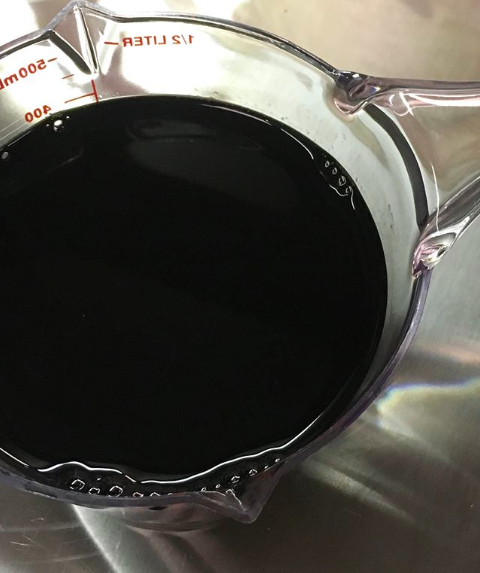
After having success with their products Release 9-0-1 C and Release Zero, which both contain 10% liquid carbon, Mirimichi Green has made the decision to incorporate 2% liquid carbon into the remaining liquid products: Nutri-Release, Nutri-Turf, Nutri-Kelp, and Tree & Shrub.
How much liquid carbon is in each product?
- Release 9-0-1 C – 10% liquid carbon
- Release Zero – 10% liquid carbon
- Nutri-Release – 2% liquid carbon
- Tree & Shrub – 2% liquid carbon
- Nutri-Kelp – 2% liquid carbon
- Nutri-Turf – 2% liquid carbon
Mirimichi Green began mixing the micronized liquid carbon into their products at the beginning of the year to start replenishing inventory with the updated formula. Now, all of Mirimichi Green’s liquid products stocked in distributor locations contain the liquid carbon combination. All products that have the 2% liquid carbon have a small “C” in the bottom left corner of the label (see picture below).
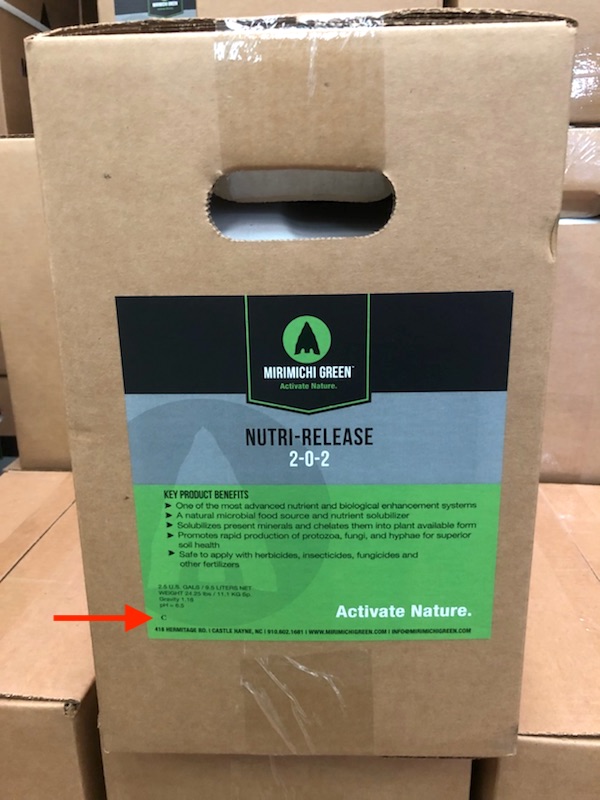
The Mirimichi Green team expects the updated mixture will provide the results that all professionals desire for their turf and plants.
Putting liquid carbon into all of the liquid fertilizers and bio-stimulants was the next step in Mirimichi Green’s efforts to create and develop a Carbon Building Program for their end users. “Carbon is key. Getting carbon back into the soil will improve overall soil health. We have seen the success of our carbon products over the years and wanted to extend that to the rest of our product line. We made this decision because we wanted all of our customers to benefit from putting carbon back into the soil,” said Web Cowden, COO of Mirimichi Green.
Start putting carbon back into the soil today by using Mirimichi Green products. Mirimichi Green specializes in solutions, not just products, with revolutionary soil amendments, fertilizers, bio-stimulants, and pesticides.
Mirimichi Green Adds New Hires To Team
Mirimichi Green, a premier manufacturer of revolutionary and sustainable landscape products, today announces that two new members have been added to the Mirimichi Green team. Erica Backus is the new Product Analyst Intern and Michael Gill is the new Inventory Specialist.
Erica Backus assumed the position as Product Analyst Intern for Mirimichi Green in May 2018. With an interest in analytics and passion for environmental economics, she is extremely excited to become a part of Mirimichi Green’s growth. Erica has past experience in customer service and social media focused marketing. She is working on obtaining a B.S. in Business Administration with majors in Economics and Finance and a Mathematics minor at the University of North Carolina Wilmington. She has also studied abroad at Kedge Business School in Marseille, France.

Erica grew up in Portland, CT and currently resides in Wilmington, NC. In addition to learning as much as she can about applying economic systems to protect and sustain our planet, she enjoys improving her wakeboarding skills and spending time with her siblings and parents.
“I just recently discovered my passion in applying economics to sustainability to make people see “going green” is not only beneficial to the environment but also financially advantageous. I hope to learn about Mirimichi Green’s sustainable process of manufacturing effective products, help educate people about the benefits, and tap into new markets. I am so excited to be a part of a company that shares my values and contribute to its growth.”
Michael (Mike) Gill relocated from Weirton, West Virginia, to join Mirimichi Green as an Inventory Specialist in March 2018. In his new role, he will manage on-site inventory, track inventory maintenance and control equipment flow, oversee inbound and outbound shipments, and investigate inventory discrepancies. Michael has 10 years of experience in day-to-day operations in the landscaping industry and industrial work in manufacturing plants.

When Michael is not working, he enjoys fishing, camping, and anything outdoors – thanks to his ultra-competitive side. When he’s not outdoors, he’s cheering on the Pittsburgh Penguins or cooking his nonna’s famous Italian meatballs.
“I’m very thankful to be able to work for a company who genuinely cares so much about the environment. It’s awesome to see people’s reactions when they try Mirimichi Green for the first time. They’re amazed by the results and practically fall in love with our products.”
Mirimichi Green is thrilled to have two new team members and expects business to thrive with Michael and Erica’s support.
Get Rid Of Bugs With Mirimichi Green Pest Control
Are pesky bugs disrupting your outdoor areas? Mirimichi Greens Pest Control is the solution with proven efficacy and safety. This all-natural formula controls:
- Mosquitoes
- Ticks
- Fleas
- Ants
- Roaches
- No-see-ums
- Chiggers
- Spiders
- Mites
- Whiteflies
- Aphids
- Plus many more insects
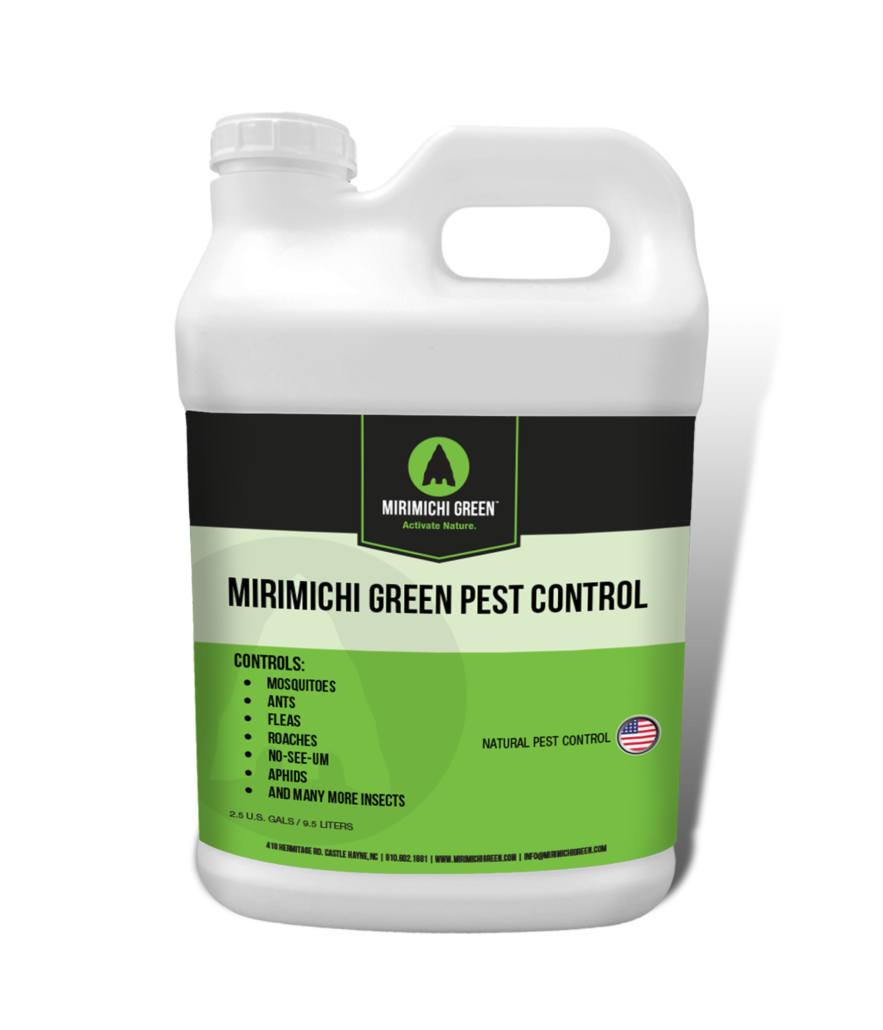
Mirimichi Green Pest Control is not a neurotoxin and is made with all natural and/or organic ingredients. Mirimichi Green Pest Control is known to be safe to spray around people, pets, and plants, with an immediate re-entry time after the spray has settled, making it ideal for any outdoor area.
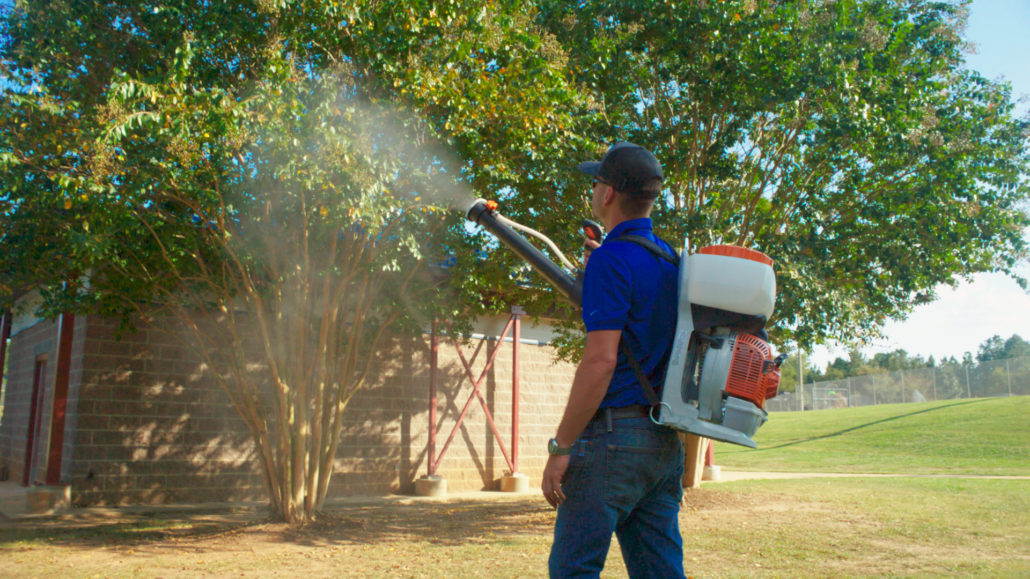
This formulation is a total control pesticide because it’s a pheromone interrupter, deterrent, repellent and also a larvicide which is what makes it so effective. By killing the larvae, egg cycles are disrupted so future outbreaks of pests are eradicated in the treated areas over time.
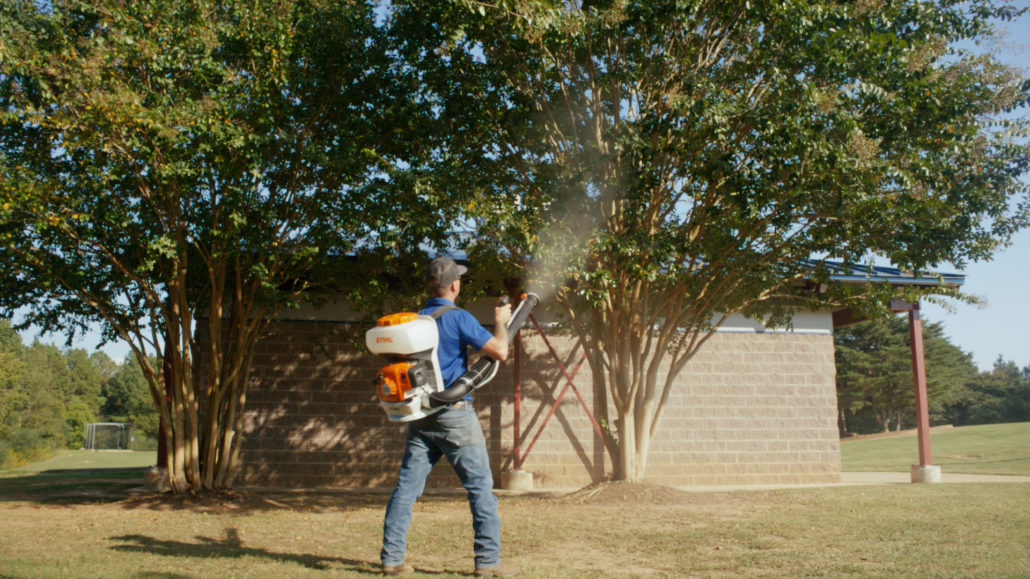
How to apply Mirimichi Green Pest Control:
- Use a backpack sprayer, backpack blower, hose dilution attachment, or sprinkler injection pump
- 1st application and infestation application – dilute 16 oz. of product per 1-gallon of water
- Reapplication rate – dilute 4-8 oz. of product per 1 gallon of water
- Reapply every 14-28 days
- Be sure to spray the entire property
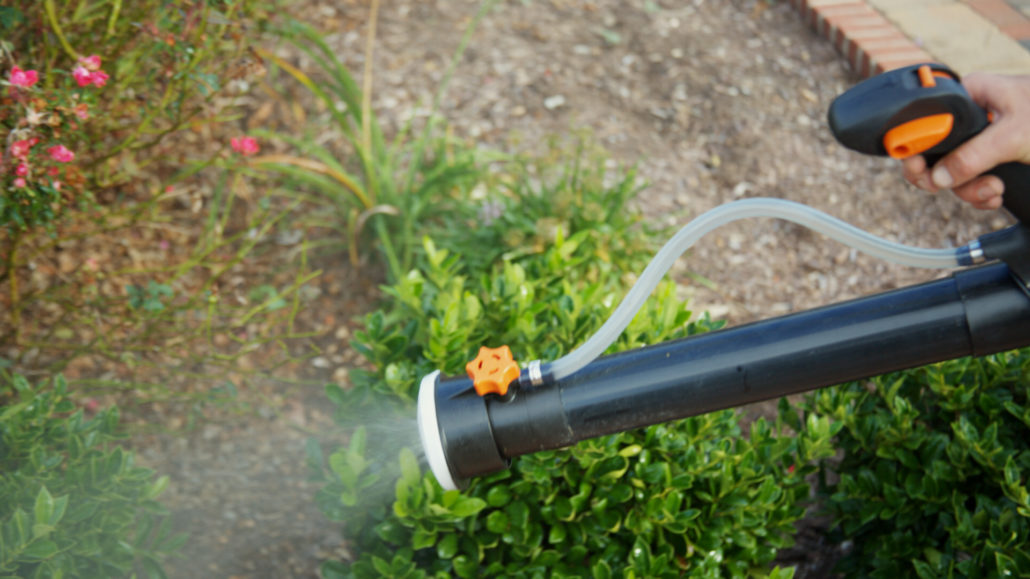
Some of the important key points about Mirimichi Green Pest Control are:
- Safe to spray around people, pets, and kids
- It works in ALL weather conditions. Rain doesn’t affect the efficacy.
- There is an immediate re-entry time after the spray has settled
- Insects can not become immune to this product
- There are no harsh odors
This pest control product is ideal for any outdoor setting such as lawns, parks & recreation areas, campground sites, playgrounds, sports fields, golf courses, universities, farms, gardens and more!
Spring Tips For Sod And Topdressing Applications
Curious about Mirimichi Green products but don’t know where to start? Mirimichi Green can help! Below are two basic Spring applications to try using Mirimichi Green’s CarbonizPN Soil Enhancer, a soil amendment blend of premium organics and USDA Certified Biobased Carbon (biochar).
For sod applications:

- Evenly spread (1) 40-pound bag of CarbonizPN Soil Enhancer under 1-2 pallets of sod.
- Spray 3 ounces of any of our liquid bio-stimulants from the Release product line at the rate of 3 ounces per gallon of water.
- Be sure to apply the Release product after the CarbonizPN application.
For topdressing applications:
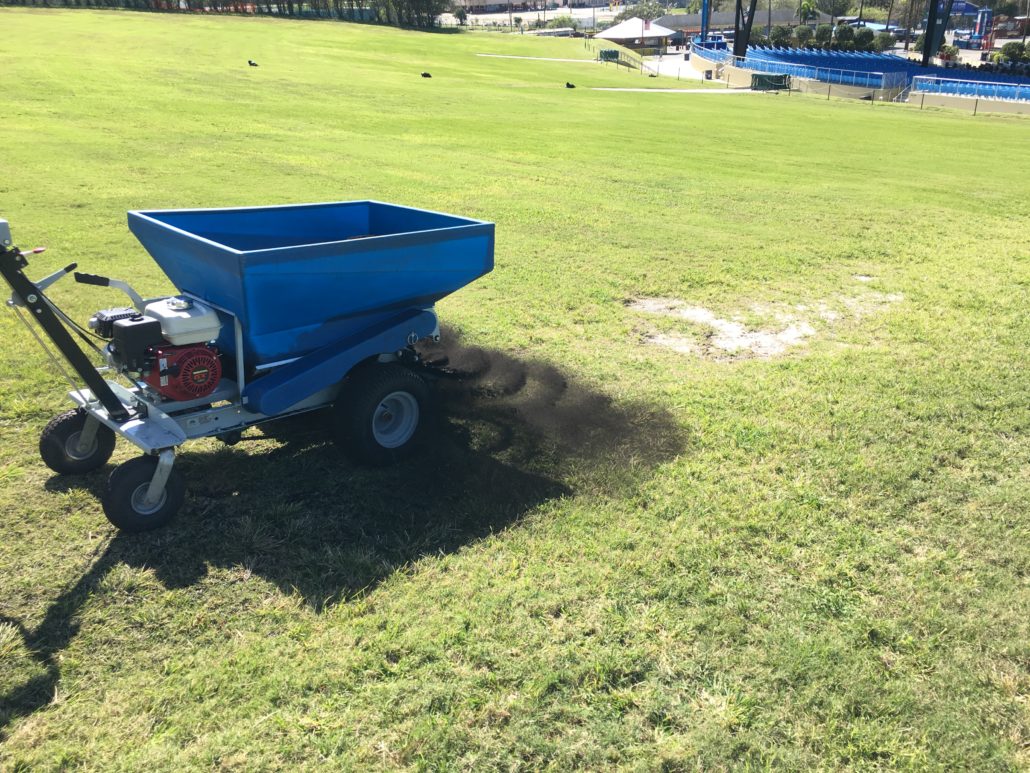
- Spread 20-40 pounds of CarbonizPN Soil Enhancer depending on the health of the turf.
- Spray 3 ounces of any of our liquid bio-stimulants from the Release product line at the rate of 3 ounces per gallon of water.
- Be sure to apply the Release product after the CarbonizPN application.
US Equestrian Federation Announces Mirimichi Green as an Official Sponsor
By: US Equestrian Communications Department
Lexington, KY – The United States Equestrian Federation (US Equestrian) is pleased to announce Mirimichi Green Express as an Official Sponsor of US Equestrian and an Official Partner and Cross-Country Course Sponsor for the Land Rover Kentucky Three-Day Event.
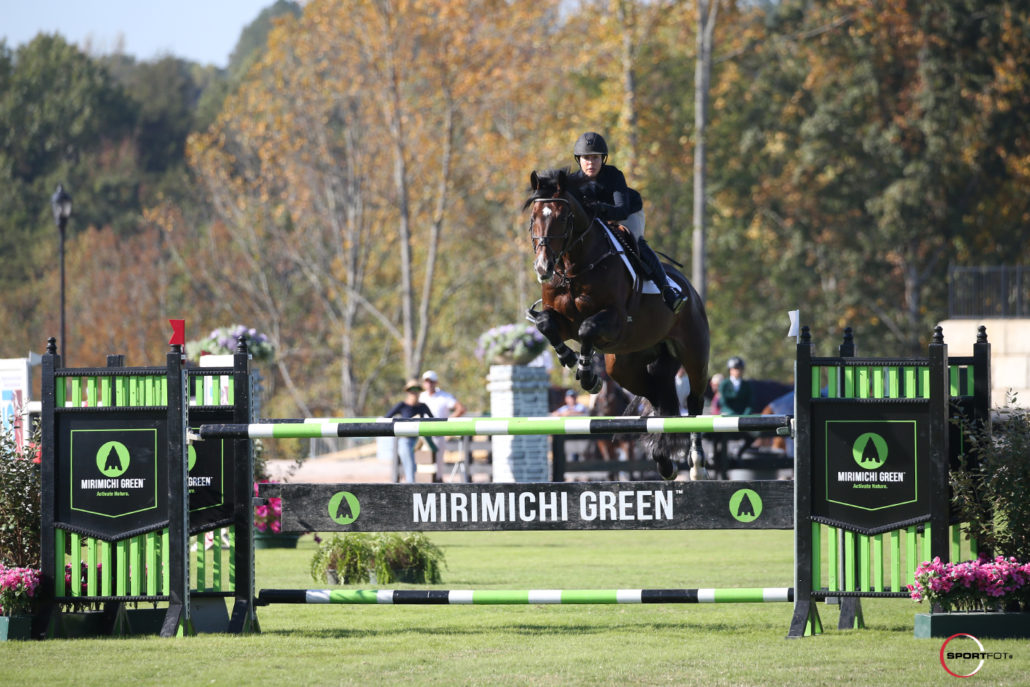
Mirimichi Green Express’s support of US Equestrian and the Land Rover Kentucky Three-Day Event includes helping to prepare and maintain the integrity of the cross-country course for the Kentucky Three-Day Event. In addition, they will be sponsoring two additional videos in the US Equestrian Learning Center.
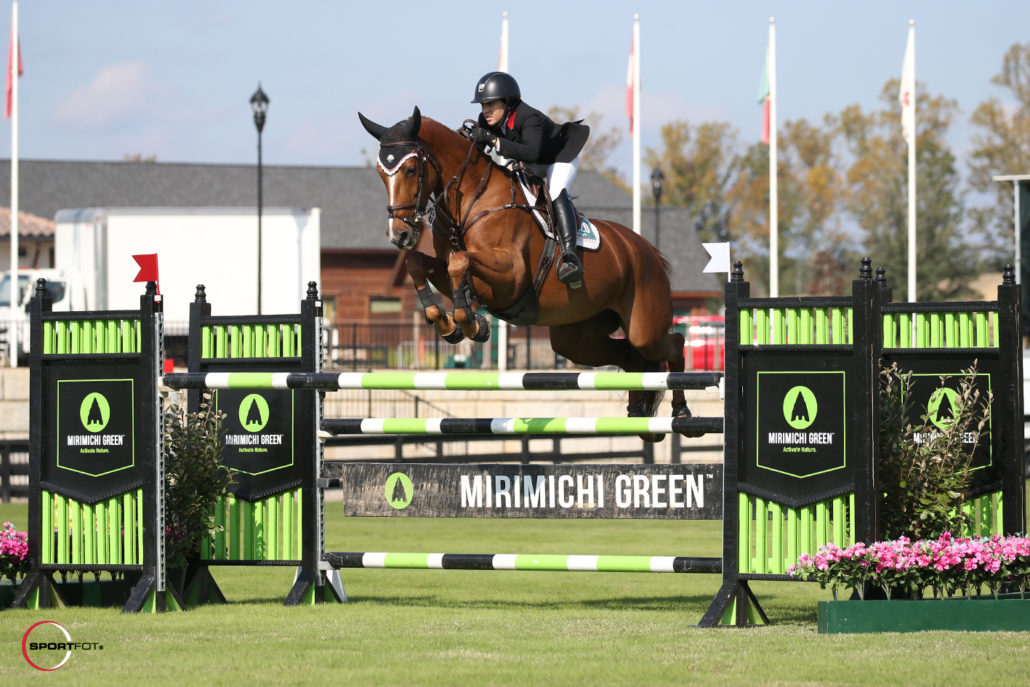
“The safety of our athletes and their horses is of utmost importance to US Equestrian,” says US Equestrian CEO Bill Moroney. “Mirimichi Green Express will provide a great service to our eventing athletes by maintaining the cross-country course for their most prestigious and renowned event in the United States. We are very excited to have them on board.”
“We are pleased to have Mirimichi Green Express supporting the Land Rover Kentucky Three-Day Event,” said Stewart Perry, President of Equestrian Events, Inc. “Safety is paramount in our sport, and their products will make the best footing in the sport even better.”
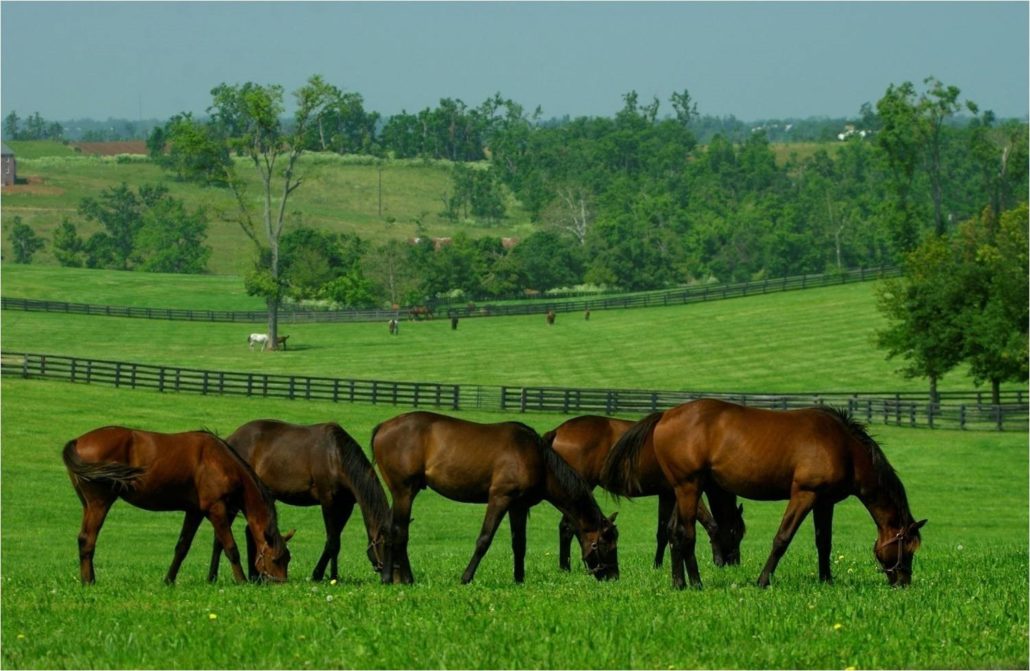
Mirimichi Green is headquartered outside of Wilmington, N.C., and is responsible for the manufacturing, sales, and distribution of the complete Mirimichi Green product line. This line includes products and services for businesses who are striving to cut costs and be environmentally responsible.
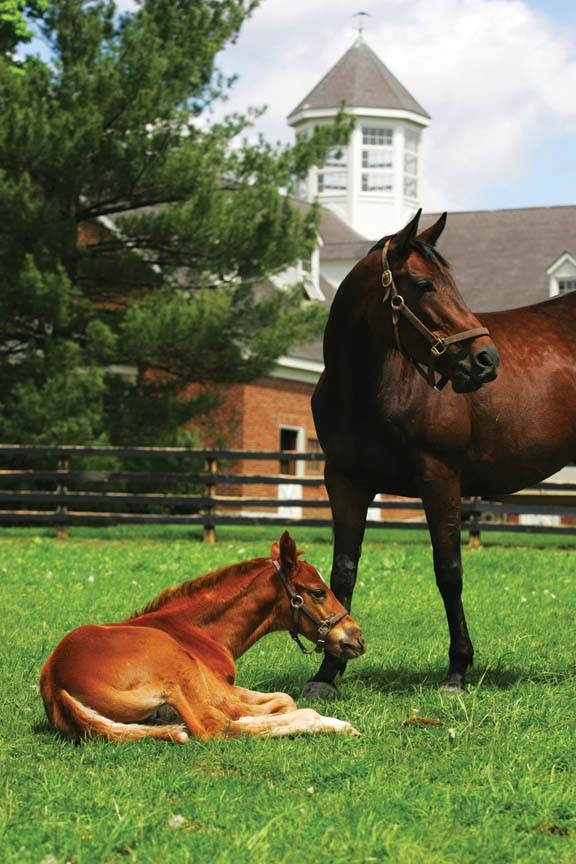
“Mirimichi Green is excited for the opportunity to partner with US Equestrian, as well as the Land Rover Kentucky Three-Day Event,” said Russ Britton, CEO of Mirimichi Green. “As a company, we have always made it our goal to educate the public on the importance of soil health and the responsibility that goes along with it, including environmental impact, safety, and, ultimately, cost savings for the end users. By providing products based on price, performance, and sustainability, we are able to address soil health and turf establishment from all areas of importance. The equine market is a perfect platform and partnership to be able to expand our message. We are excited to work with horse
enthusiasts within a wide variety of disciplines to help them achieve their goals for responsible
practices in both construction and maintenance phases of their property.”
About Mirimichi Green
Mirimichi Green is known for their work on many prestigious properties, from golf courses and professional sports fields to cross-country courses and polo fields. Mirimichi Green has developed a professional line of landscape products that are sustainable, effective, and affordable. Each product is designed to improve turf health in more ways than one.
Golf Course Industry – Injecting Different Theories
The maintenance rituals of aerification and topdressing are fixtures in the world of golf. Depending on their locales and annual budgets, superintendents spend a few days each year punching holes in their greens with metal tines, or pulling cores with solid tines to improve airflow, break up organic material and maintain turf health. The process requires time and man-hours. It can result in lost revenue, particularly at daily-fee facilities, because the golf course must close while the work is in progress. Golfers then may stay away for a stretch even after the course reopens. Superintendents are exploring alternatives to traditional aerification. For example, DryJect, headquartered in Hatboro, PA, just outside Philadelphia, has a machine that accelerates the aerification/topdressing process by substituting powerful streams of water for tines.
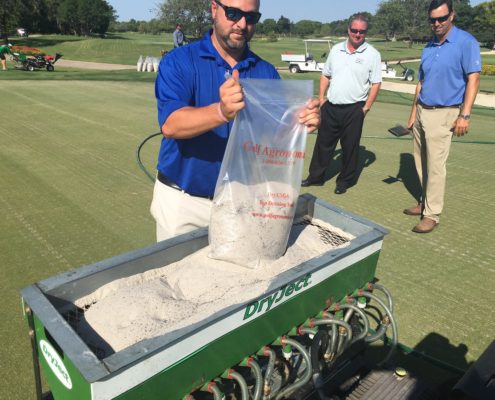
While no soil material is extracted in the process, a crude comparison to the technology is to think of the stream of high-pressure water as a solid tine, says Jeff Broadbelt, DryJect’s vice president of operations.
“Each pulse of water is a make-believe solid tine,” he says. “But the pulse of water, when it’s shot down, produces an explosive-type reaction going down. There is a lot of lateral shattering going on. It’s like a mini-earthquake.”
Depending on soil conditions and the superintendent’s preference, the holes are punched to a depth of between 2½ to 6 inches. For instance, some turf managers may desire deeper holes to break up a layer of organic material that might be present where holes were punched in the past using solid tines. The most common depth is in the 4- to 5-inch range. The holes are spaced at adjustable intervals.
What has piqued superintendents’ interests is the fact that immediately after the holes are created, they are filled with sand, reducing or perhaps eliminating the need for heavy topdressing in between core aeration cycles.
“We’re taking out the topdressing component by just getting it done for you right off the bat,” Broadbelt says. “A lot of superintendents will maybe topdress lightly afterward, but it’s not necessary. There is a little bit of sand residue left. Not every grain of sand gets into that hole. It’s equivalent to a very light topdressing.”
Because the holes filled are virtually instantaneously, a superintendent could theoretically begin work on their front nine in the early morning hours and have those holes open for play by afternoon, a big difference from having to shut the greens down for a stretch of time following a core aeration.
It’s common for superintendents to add material or amendments, to the sand to retain moisture in the soil and the root system of the plant. The amendment consists of sand-sized particles of material, creating a mixture that might be as much as 90 to 95 percent sand, the remainder being the amendments.
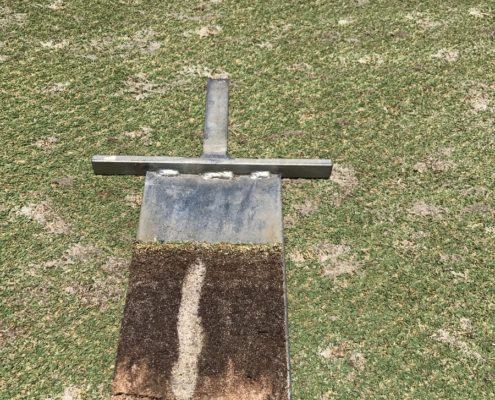
For example, Profile Products of Buffalo Grove, Ill., manufactures PPC Green Grade, a porous ceramic material that strengthens root systems, enhances moisture retention and increases disease resistance. The particles are 74 percent pore space, 39 percent capillary (water) pores and 35 percent non-capillary (air) pores. “If you look at (the particles) under a microscope, they have all kinds of micropores in them,” Broadbelt says.
They hold water, but once they’re filled, water drains through them like a sieve. So, you’re not necessarily giving away downward drainage by using the product. “It does hold water, but not so tightly that the roots can’t extract from it,” Broadbelt adds.
Mirimichi Green manufactures CarbonizPN, a soil enhancer it markets as an amendment, which, among other things, reduces soil compaction and water needs while also optimizing soil pH. It’s a 50/50 blend of crystallized carbon (Biochar) and a premium organic compost that the company manufactures. Because the carbon portion has a half-life of around 500 years, Mirimichi Green’s chief operating officer Web Cowden describes the product as a “permanent soil amendment.”
“It has a very porous structure,” he says. “The process by which we make this is called pyrolysis (utilizing extreme heat to simulate the chemical decomposition of organic material). What you’re left with is a very porous crystalized structure that has a very high carbon content and a very low ash content. It has the ability to hold air, water and nutrients within its pore structure, and makes them available to the plant when they are needed.”
In addition to CarbonizPN, Mirimichi Green manufactures Nutri-Release, a broad-spectrum liquid organic fertilizer that can be added to the sand/amendment mix as a biostimulant at a rate of three ounces per 1,000 square feet. The two products, when used in tandem, have a significant impact on the soil profile, Cowden says.
“You’re putting organics, you’re putting long-chain carbon, you’re putting biology into the soil profile,” he says. “And then with the liquid biostimulant, you’re actually feeding the biology that you’re putting into the soil. So, it’s kind of a one-two punch.”
Hole history
The idea of punching holes with water is not a new one. The technology was developed in Sweden and later became the property of Land Pride, a division of Great Plains Manufacturing.
In 2000, Peter van Drumpt and Chris des Garennes purchased the technology, along with the patent that went with it and other necessities, and then making alterations so it would be both reliable and commercially viable. Thus, DryJect was born.
It’s possible to treat 18 holes in a single day, depending on the number of DryJect machines being used on the job. Typically, two or three machines can complete the task, but perhaps four are needed depending on the size of the greens being treated.
The structure of the crystallized carbon, which Cowden describes as resembling a honeycomb, holds air in some of its pore spaces, thereby allowing improved air circulation in areas where the organic material may have accumulated over time.
“That becomes kind of a home for all the biological activity,” Cowden says. “All the microbes have a place to go into these pores. They’re protected, they can reproduce and help keep the soil biology alive. Having an aerobic root zone is just as important as having moisture down there. When that becomes anaerobic and your biology can’t survive, thrive or reproduce, then you get a dead thatch layer and everything below it just dies away.”
The process is catching on with superintendents throughout the country. Chris Tritabaugh, completing his sixth season as the superintendent at Hazeltine National Golf Club in Chaska, Minn., which hosted last year’s Ryder Cup, first used DryJect in October of 2015 and in May and October of 2016. He used it again this past May. Another treatment was scheduled for Nov. 1.
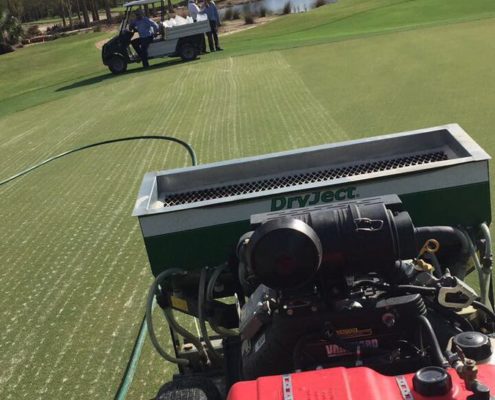
“Our greens have gotten a lot better since we started doing it from a firmness standpoint,” Tritabaugh says. “They weren’t bad, but in my opinion, they perform now just as well as they did when they were new.”
Tritabaugh and his team do not use an amendment during the process. Instead, the holes are filled with 100 percent sand. “We’re able to get the exact same sand that was in the root zone when the greens were built in 2010,” he says. “From a spec standpoint, it’s the same thing that’s already in there.”
Some have raised the question of whether DryJect will supplant traditional aeration as a standard industry practice. Tritabaugh doesn’t necessarily share that sentiment.
“I think it’s a tool to be used depending on what the superintendent’s desire is,” he says. “I think it would be a mistake to say that (core aeration) is unnecessary or that solid tining is unnecessary or that DryJect could replace either of those things.”
Based on his experience, Tritabaugh doesn’t believe the DryJect method will render core aeration or solid tining obsolete. Instead, he considers it just another tool in a superintendent’s turf toolbox.
“I think it can in the right situation, but I think it would be unfair to limit (a superintendent’s) tools,” Tritabaugh says. “It doesn’t mean one is particularly better than the others, but I think in the right situation certain ones are better.”
Tritabaugh hasn’t relied on pull-core/solid-tine practices at Hazeltine in recent years, but he hasn’t abandoned them either. “We’ve done some different methods on a couple of our greens,” he says. “Is it a tool we want to use in the future? It could be, but it’s not a part of our standard cultural practices.”
Rick Woelfel is a Philadelphia-based writer and frequent GCI contributor.
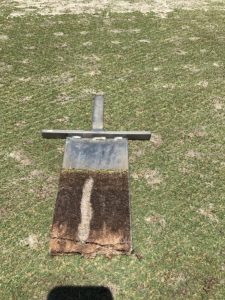
Golf Course Industry – Injecting Different Theories
The maintenance rituals of aerification and topdressing are fixtures in the world of golf. Superintendents are exploring alternatives to traditional aerification.
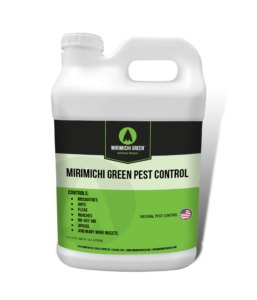
Mirimichi Green Introduces Pest Control Product
Mirimichi Green is introducing a new pest control product that is all-natural and will control and kill pests. Mirimichi Green,
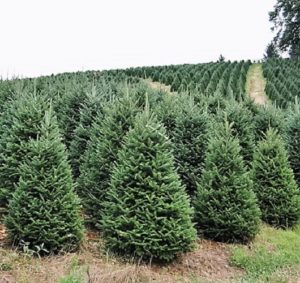
How To Keep A Christmas Tree Fresh And Green
You have a Christmas tree! Now it’s time to prevent your tree from losing all of its needles and keep your Christmas tree as fresh and green as the day it was cut. But, how? With Mirimichi Green’s Tree & Shrub!
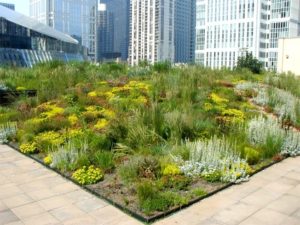
Urban Sustainability Is Growing
Green roofs and walls are gaining popularity in urban developments. This unique landscaping trend is more than just an architectural design, it provides the base for plants to positively impact polluted urban and suburban environments.
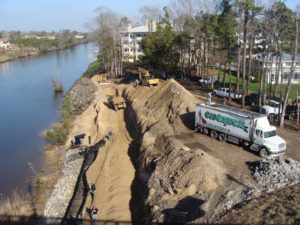
Simple Steps to Control Erosion On Project Sites
Erosion can be a big problem, especially on construction sites. These simple steps will have a positive effect when controlling erosion and sediment problems on your next job.

High Nitrogen Poses Risk To Environment
High nitrogen poses an alarming risk to the environment and researchers are taking note. The human production of fixed nitrogen
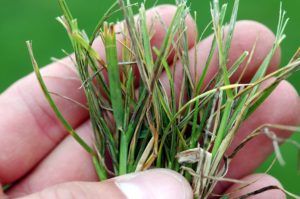
Successful Turf Management and Disease Control Methods
There’s more to turf management than just painting the field and filling in the divots. Being able to recognize turfgrass disease is extremely important for successful turf management and disease control.
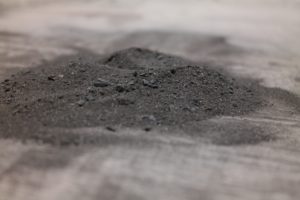
Launch of CarbonizPN DJ Fine Grade
Mirimichi Green introduced a new member to their CarbonizPN product line.CarbonizPN DJ Fine Grade is a refined, powder-like soil amendment, ideal for blending into sand mixes, topdressing and aerating.
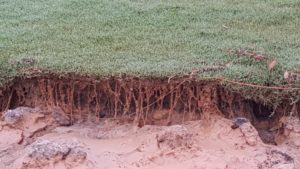
Help Customers Avoid Soil Erosion and Runoff
Help Customers Avoid Soil Erosion and Runoff. When preparing a landscape for the cooler seasons, be proactive for potential soil erosion and runoff that is likely to occur.